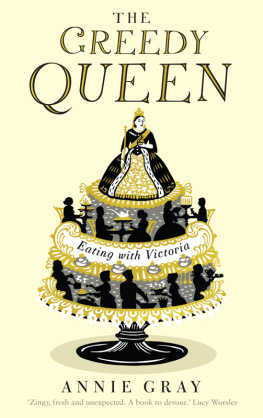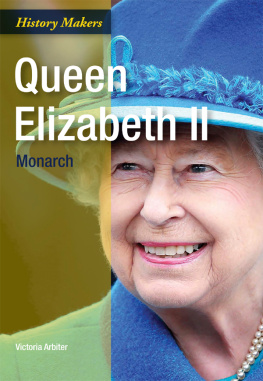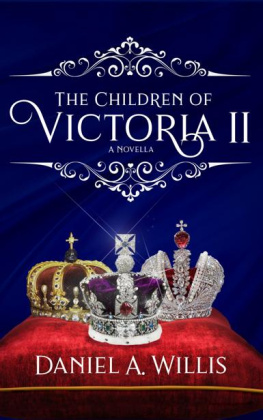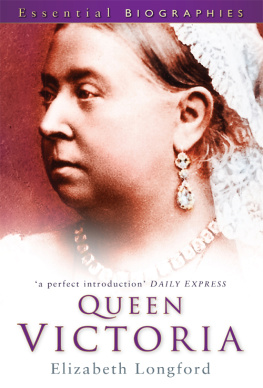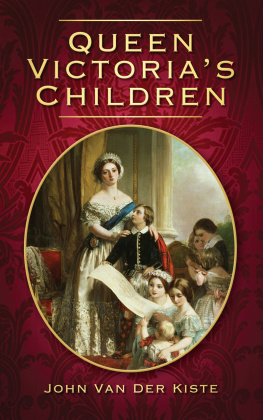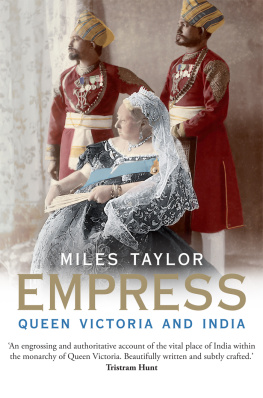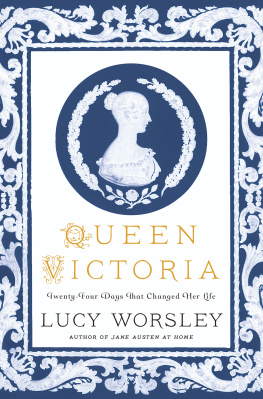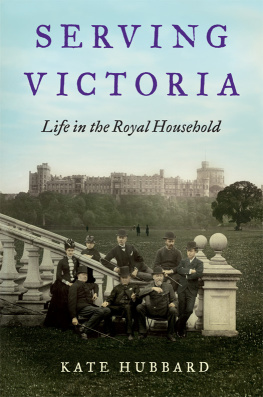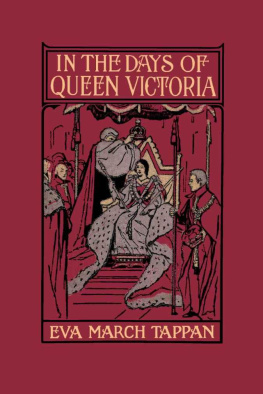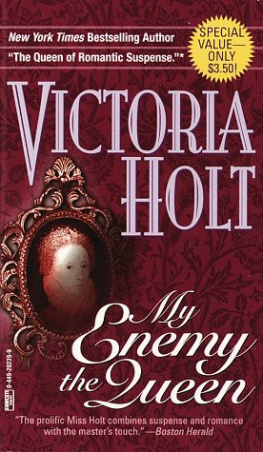THE GREEDY QUEEN
ANNIE GRAY is an historian, cook, broadcaster and writer specialising in the history of food and dining in Britain from around 1600 to the present day, conducting her research both in libraries and in kitchens. She has worked at Audley End amongst other historical kitchens, and gives lectures all over the country. She presents history documentaries including Victorian Bakers, and appears on BBC Radio 4s The Kitchen Cabinet. She lives in East Anglia.
THE GREEDY QUEEN
Eating with Victoria
ANNIE GRAY

First published in Great Britain in 2017 by
PROFILE BOOKS LTD
3 Holford Yard
Bevin Way
London
WC1X 9HD
www.profilebooks.com
Copyright Annie Gray, 2017
The moral right of the author has been asserted.
All rights reserved. Without limiting the rights under copyright reserved above, no part of this publication may be reproduced, stored or introduced into a retrieval system, or transmitted, in any form or by any means (electronic, mechanical, photocopying, recording or otherwise), without the prior written permission of both the copyright owner and the publisher of this book.
A CIP catalogue record for this book is available from the British Library.
eISBN 978 1 78283 273 7
To Matt, with love
In memory of my grandma, Brenda Gray (ne Evans)
Acknowledgements
This book would not have seen the light of day without my agent, Tim Bates, who has been unwavering in his support and supply of beer, and my editor, Rebecca Gray, whose editorial comments were a delight, and whose patience in the face of endless toilet references has been awe-inspiring. Thanks also go to their excellent colleagues at PFD and Profile Books.
Many people have helped me with ideas or information while Ive been researching The Greedy Queen, as well as allowing me access to archival material without which I could not have written a thing. Primary among these are the brilliant staff of the Royal Archive: Pam Clark, Allison Derrett and Lynnette Beech, along with Carly Collier in the Print Room. I am grateful to Her Majesty the Queen Elizabeth II for giving permission for the online publication of Queen Victorias Journals, and for the reproduction of some of the pictures included within this book. I would also like to thank the various archivists who took time to reply to emails, especially those at Staffordshire Record Office, Chatsworth, Bangor University, Hastings Museum, and Blair Castle. At (in some cases ex of) Historic Royal Palaces, I was encouraged by Lucy Worsley, and aided and abetted by Jonathan Scott at Kew, as well as Lee Prosser and Nigel Arch. At Kensington Palace, Deirdre Murphy talked to me about Queen Victorias dress, figure and height, and Ian Chipperfield, costumier extraordinaire, also helped with matters of clothing. At English Heritage, Michael Hunter and Andrew Hann have been long-standing supporters, and the research I did for them on Osborne House forms the background to several chapters. Meanwhile over at Historic England, Steven Brindle showed me round the restored Windsor kitchens, and, along with Richard Williams of Windsor Castle, provided a very memorable morning. Richard Pollitt at Mansion House in York helped me out with particulars of the Queens meals en route to Balmoral, as well as admiring with me the epic 100 Guinea Dish. My fellow historians, Richard Fitch, Marc Hawtree, Ivan Day and Sara Pennell, all pointed me in directions Id not yet discovered, and I am also grateful to the various food people, historians and generally fascinating community I follow on Twitter. At the University of York, Kate Giles has supported my Research Fellowship, and I am grateful both to her, and the wider Archaeology Department, for enabling me to continue my association with York. The Greedy Queen was short-listed for the Jane Grigson Trust Award for New Food Writers in March 2016, which gave me a tremendous boost, and for which I thank the Trustees.
On a more personal level, I owe a huge debt to the team of The Kitchen Cabinet, both on and off-air, especially Jay Rayner, Tim Hayward, Rachel McCormack, Vicky Shepherd and Darby Dorras, and Id like to thank them for their undying support and encouragement in the face of terrible pottage. Id also like to thank the cast and crew of Victorian Bakers, in particular Peter Sweasey, Emily Thompson and John Swift, who have both encouraged me, and also given very specific particulars of gas ovens and anti-fart bread. Del Sneddon sent me a bottle of Lochnagar whisky so that I could carry out very important experiments in royal drinking, and the staff at Toppings bookshop in Ely fed me tea. Special thanks to Rebecca Harris Quigg for all the gin. My friends have been brilliant: Katharine Boardman, Rebecca Lane, Kathy Hipperson and Laura Gale, I salute you. Mike and Chris Grundy put me up (and put up with me) on repeated visits to Windsor, and saved me from certain death when knackered on the M25. The various people who have read drafts and commented, including many of the above, as well as Jess Smith, all deserve thanks, as do my family: Mike and Angela Gray, Kristy Noble and Sean Griffin, Marion Howling, and Richard stop sending me stuff Gray (who also looks after my website and makes elegant sense of my doodles). Last, but very much not least, I would probably still be thinking and not writing, were it not for my partner, the inestimable Matt Howling.
Introduction
I n July 2015 a pair of extraordinarily large bloomers were auctioned in Wiltshire. They sold for 12,900, breaking the record for the previous pair of similarly generously proportioned underwear, which fetched 6,200 a year earlier, and the news of their sale was widely reported across the media. Embroidered with the letters VR, and verified as genuine by the auction house, they showed our continuing fascination with a woman who died over a hundred years ago. Bloomers of similar dimensions and provenance appeared as part of an online history course run by Historic Royal Palaces in 2016. Reactions were immediate and polarised, from those who peered at them in avid curiosity, seeing them as offering a rare personal insight into a distant figure, to those who found the whole thing sordid, and cried out for people to leave the poor woman alone. Her weight was her own issue, and we shouldnt be pawing over personal items in such an undignified way, even if she had given the items away as tokens of esteem, knowing that they would be treasured and kept for posterity and, despite an initial interdiction to do so, eventually sold on.
Queen Victoria, who was, of course, the original wearer of the bloomers, was a complex, fascinating person, whose reign was, until 2015, the longest of any British monarch, and who was head of state during some of the most formative years of British history. A long and influential life has made her one of the best known figures from the past, and over 500 books have been written about her, with countless more about her children, her palaces, her influence and her legacy. This book is about her food.
When Victoria came to the throne, in 1837, she was a petite, elegant young woman, with what commentators called a fine complexion, though a lamentable tendency to pose, when resting, with her mouth slightly open. Very few people knew anything about her personality, which was barely formed at eighteen years old, and she was thrown into the maelstrom of court life with little experience of the world of politics, people outside her immediate circle, or fine dining. She was a party animal, eager for what she called dissipation, but equally ready to work hard. In recent years her damaging childhood and delight in becoming Queen has become better known in popular culture, mainly through films such as
Next page
